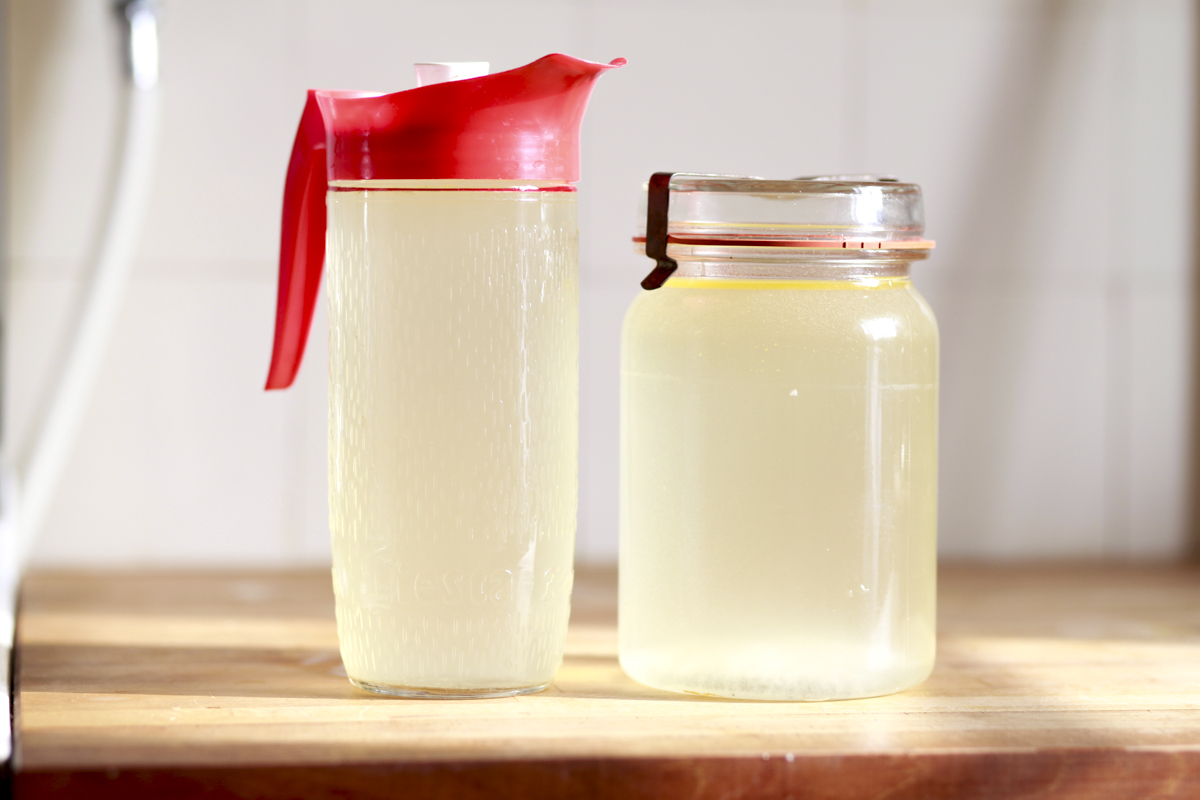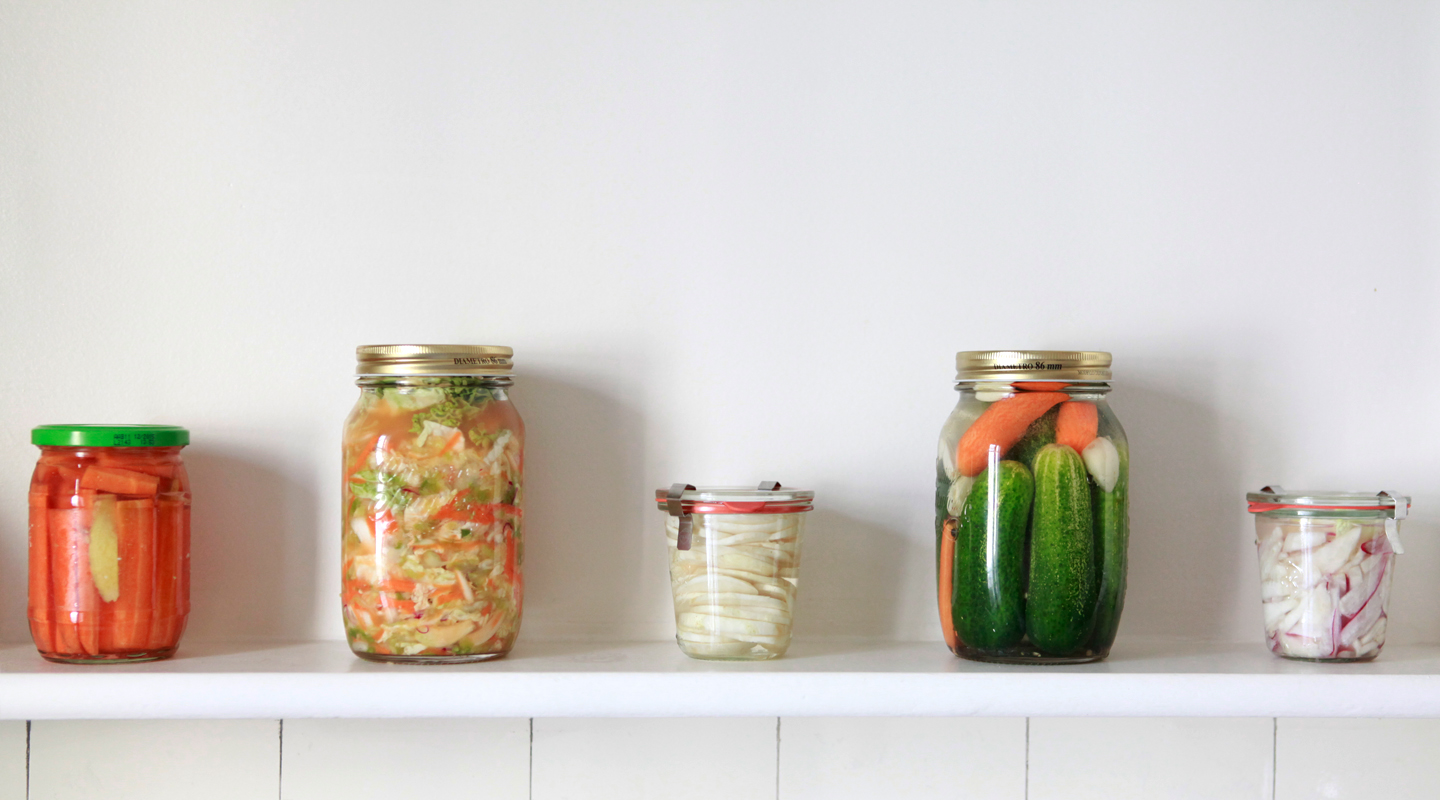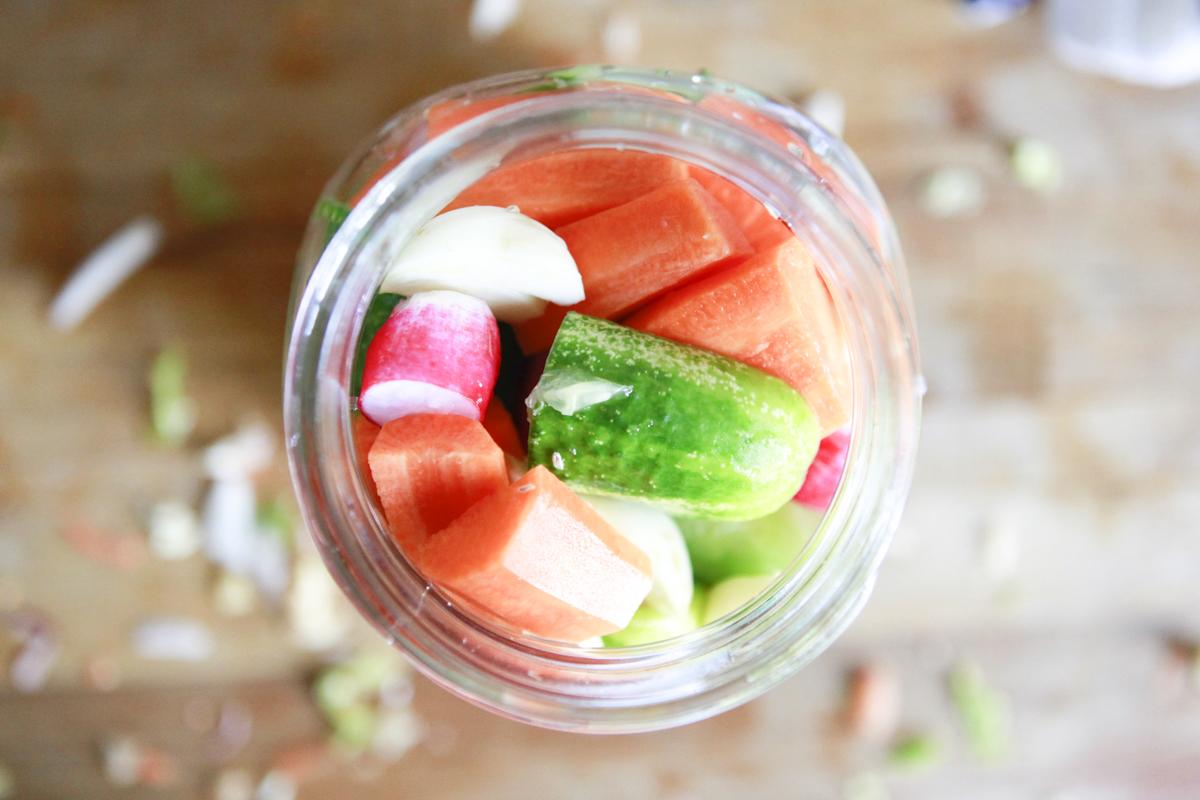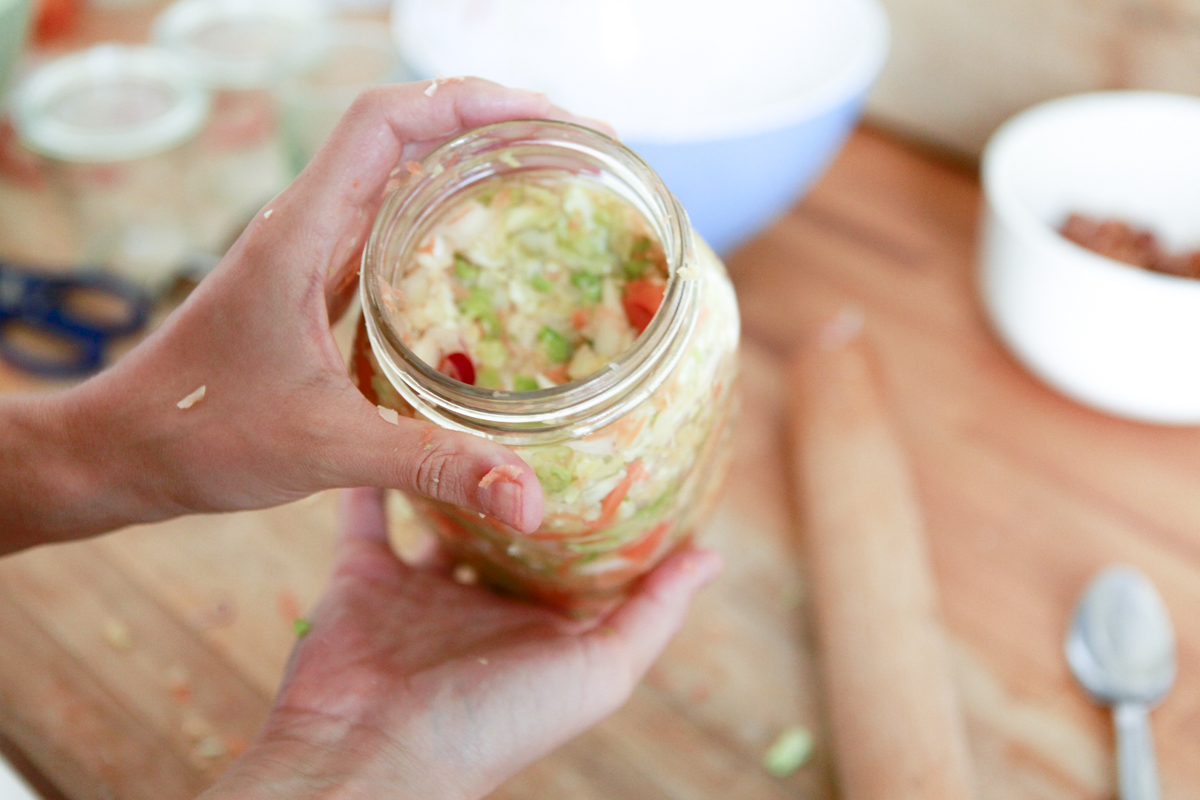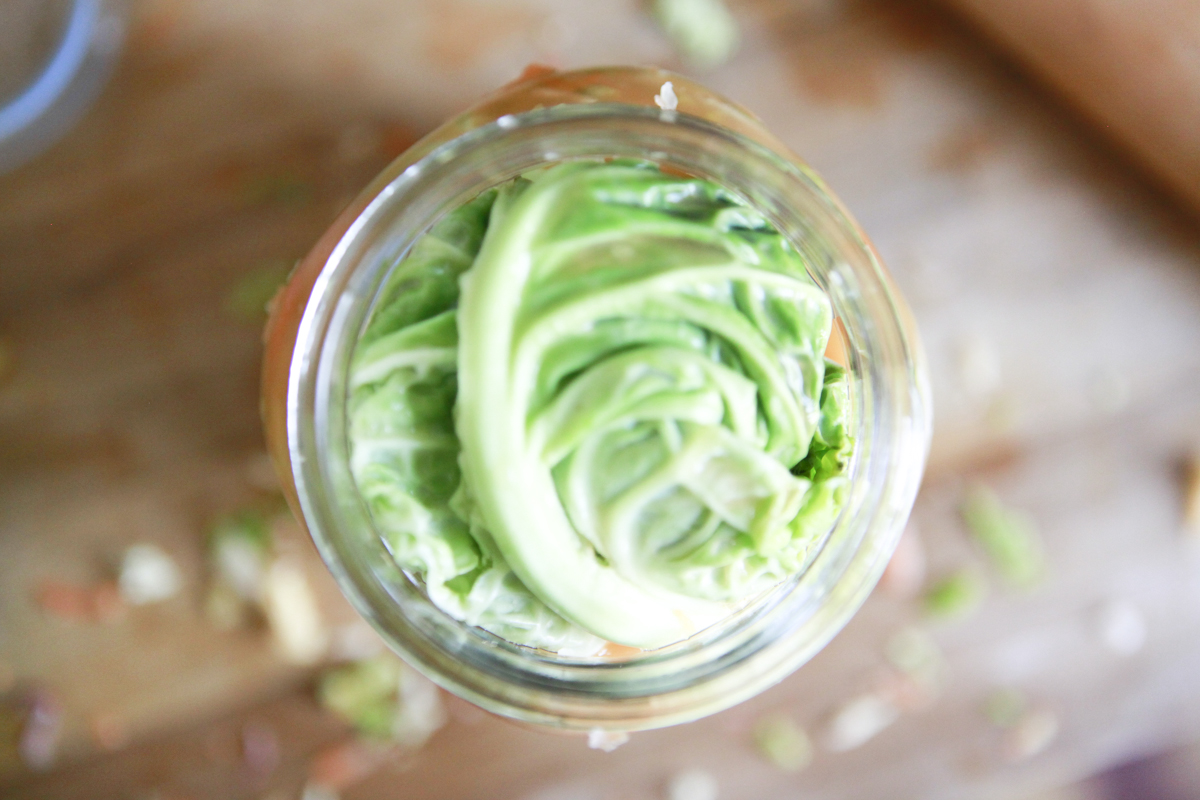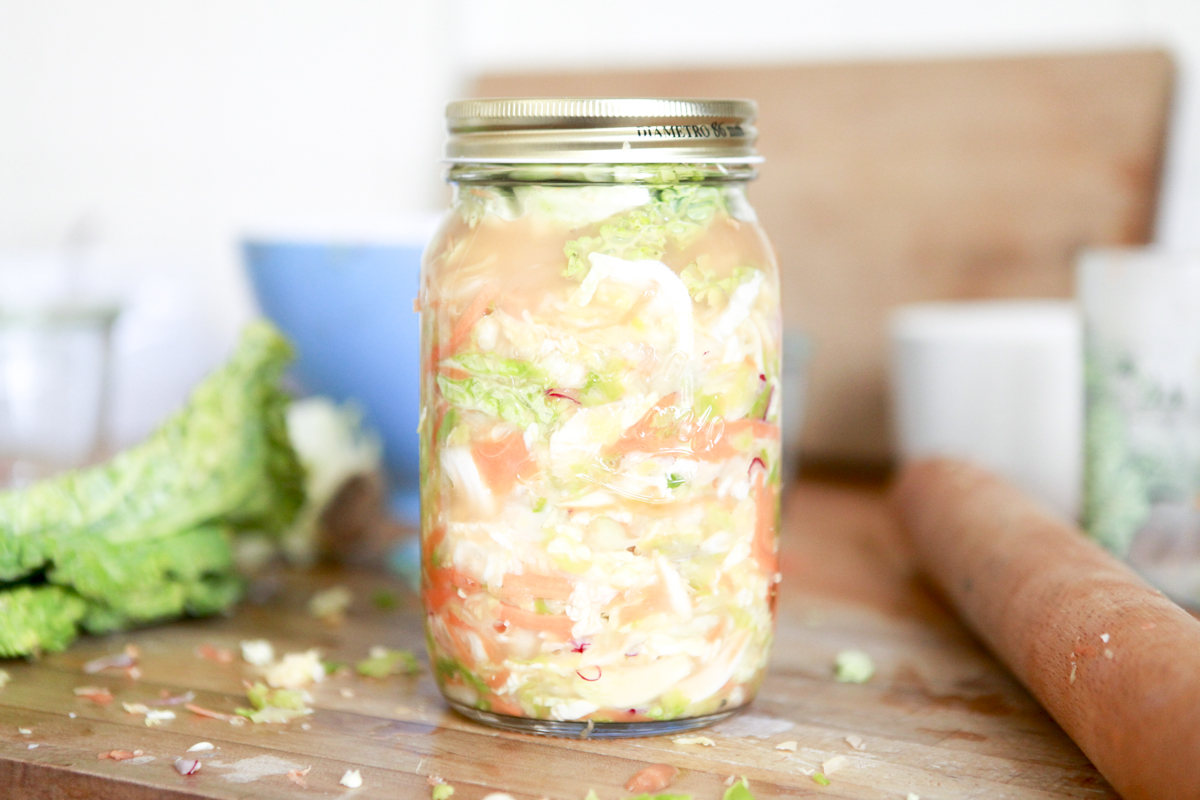For me, bone broth is it.
While some find wellness through the straw of their smoothie or at the bottom of their green glass of spirulina, I find that I never feel more nourished, more well, in all senses of the word, than when the contents of my bowl, my mug are of the golden, gelatinous, mineral-rich kind.
Now, I’m not talking about the stock found in tetra-packs or the bouillon cube wrapped in foil, I’m talking about broth, in all its simmering glory, home-rendered from nothing but bones, water, vinegar, heat and time.
When I have a jar of bone broth in my fridge, as funny as it sounds, I feel safe. Safe because I know that a nourishing meal is within reach with even the most modest contents of fridge. Some carrots, an old celeriac, garlic, onions: voila! a velvety carrot soup. Some rice and lentils with nary a vegetable to be found: cooked in bone broth the flavor becomes complex and comforting, as savory as a all-day-stewed tomato-sauce.
There are a few, basic rules for making broth, however they do differ depending on what bones you use. I made a broth with the bones from last week’s Dimanche Roast, so I’ll be detailing the basics for a chicken broth this week.
Gellin’ like…the Gelatin-Component in Bone Broth
Bone broth is good-for-you in so many ways. It’s rich in many valuable minerals like calcium, magnesium, phosphorus, silicon and sulfur in a form that is easily digestible and absorbed. It contains the anti-inflammatory amino acid arginine which helps to inhibit infections caused by cold and flu viruses. And, for me most importantly of all, it’s a rare source of gelatin, a substance that attracts digestive juices and supports proper digestion.
Gella-what? Remember that lime-green, wobbly mass shaped like an angel-food cake and specked with the half-moons of canned mandarin oranges? No? Wrong generation? Ok, remember that plastic shot glass filled with candy-apple red that goes down in one schluuuurp? That’s gelatin! (And sugar, and artificial colors and flavors and, in some cases, vodka).
Gelatin is such a revolutionary component of bone broth because it is a water-loving, or hydrophillic, compound like most other foods in their raw state. However, most foods we eat are cooked and have become in this cooking process hydrophobic, or water-resistant. When we think of our digestive system–the flow of our digestive juices–it’s not hard to imagine why a diet high in cooked foods could be taxing. This is the basis for the raw foodist ideology. Even so, a diet based on raw foods does not support all climates, lifestyles, nor bodily compositions. Enter gelatin.
The gelatin content of bone broth is not altered during cooking, nor is the substance rendered hydrophobic in the process. It’s easy to see why a vegetable soup cooked in bone broth is so profound. All those cooked carrots and potatoes and onions digested within a water-loving compound; that’s some soup for the soul, indeed.
Chicken Bone Broth
For me, the greatest priority in broth making is getting your broth to gel. This means that, when cooled, your broth should have the consistency of, well, JELL-O. This can be ensured by paying particular heed to steps #1 and #5.
#1. Use cartilaginous bones.
Collagen, which is found in cartilaginous bones like the joints, neck, head and feet, renders gelatin. For chicken broth, I always use 2 chicken feet in addition to the other bones. You can find chicken feet at your local butcher, or you can ask your local chicken farmer to bring you some. They freeze well.
#2. Use bones with some meat on them.
This will not affect the gelatin content of your broth, but will increase its flavor immensely. I reserve the meat on the wings for my broth.
#3. Add vegetable scraps (if you have them) or even whole vegetables.
Bone broth is a great way to make use of kitchen “waste”–onion skins, garlic skins, ends of carrots, potato peelings. If you’re making broth weekly, you can store these in the fridge. Otherwise, freeze them for later use.
Whole cloves of garlic, halved onions, halved potatoes all add flavor to your broth.
#4. Fill a large stockpot with cold water and add the bones and feet and 1/4 cup apple cider vinegar. Let sit for an hour.
The vinegar helps to draw out the minerals from the bones.
#5. Turn heat on medium-high. When the liquid starts to roll, turn down heat immediately to low. At this point, there will be a good amount of foam on the surface of your broth. Skim, skim, skim.
This foam contains surface impurities and will negatively affect the flavor of your broth.
#6. Simmer, simmer, simmer.
I usually cook my chicken broth for 12 hours. Some say the proper amount of time for chicken broth is between 4 and 6 hours, but I’ve found that my broth never gels in this time. Experiment! And please post your findings here!
This Spring, I recently discovered the wonder-powers of the slow-cooker for broth making. It eliminates all of the leaving-my-stove-on-for-too-long anxiety and allows you to experiment with various cooking times with ease.
A pressure cooker will render a gelatin-rich broth, but many argue that it denatures the proteins in food. I’ve never used one in broth making, and am not well-versed its mechanism.
#7. Toss in a few sprigs of fresh parsley during the last 15 minutes of your simmer.
This will add minerals to your broth and complexity to its flavor.
#8. Let cool in pot, then strain into sterilized glass jars.
These keep in the fridge for 4-5 days. A layer of fat will form at the top of your cooled broth. This helps preserve your broth and can also be used to, say, fry an onion, or cook an egg.
You can freeze your broth for later use. Frozen broth will last indefinitely, it would seem. I’ve experimented with freezing in glass jars, but have had inconsistent results–with the glass shattering more often than not. I now use plastic bags, letting the broth cool completely before transferring it.
